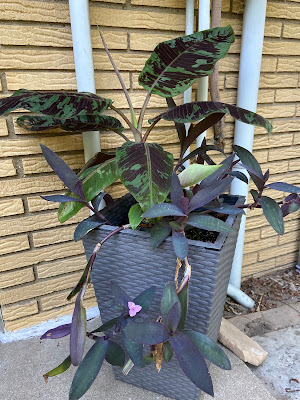As you plan your summer gardens, consider adding flowers you can preserve or use in arrangements. The pleasure of growing flowers in a garden is only a portion of gardening enjoyment. Flowers and foliage that is gathered from the garden and preserved or arranged can reward you in many other ways.
Cutting gardens include flowers that cut well and are long-lasting. Sturdy stems and long-lasting qualities make many plants good choices for cutting flowers. Floral arrangements make superb gifts and are a wonderful way to bring your garden into your home. Flowers that make good cut flowers include yarrow, zinnia, snapdragon, sunflower, and cosmos just to name a few. Many seed companies offer premixed cutting garden seeds.
 |
| dried mums and sunflowers |
You can also preserve flowers and foliage for many years by including them in wreaths, arrangements, potpourri, and gifts. Preservation methods include hanging and pressing plants, or using various drying agents.
Hanging or air-drying is the easiest and best method for preserving most flowers. If you have a garden, you have the beginnings for dried plant material. Many annuals, perennials, grasses, and foliage can be preserved easily at home. Dried flowers can add an expensive-looking decorating touch to your home at almost no cost. Flowers that air-dry well are Strawflowers, golden rod, hydrangea, celosia, Queen Anne's lace, statice, baby's breath, globe amaranth, salvia, yarrow and ornamental grasses such as bamboo, cattail, oats, sorghum, timothy, and millet.
 |
| dried roses |
Pressing flowers is another easy method; however, it distorts the shape and flattens the flowers. The advantage of pressed flowers is that they can be easily mounted and framed. Use these flowers for pressing: Asters, bleeding heart, buttercups, chrysanthemums, columbine, cosmos, dahlia, dogwood, English daisy, geranium, larkspur, lily of the valley, marigold, pansies, poppies, sweet peas, violets, and zinnia. Avoid heavy, fleshy flowers such as hybrid tea roses.
Learn more about Preserving Flowers, with University of Illinois Extension horticulture educator, Alicia Kallal. In this YouTube program, Alicia teaches several techniques you can use at home to preserve flowers and foliage for long-term enjoyment.
The beauty of a flower in bloom is a fleeting pleasure. To extend their beauty, consider adding flowers to your garden this year that preserve easily.
Originally Published in Canton Ledger Column on 5-5-18







